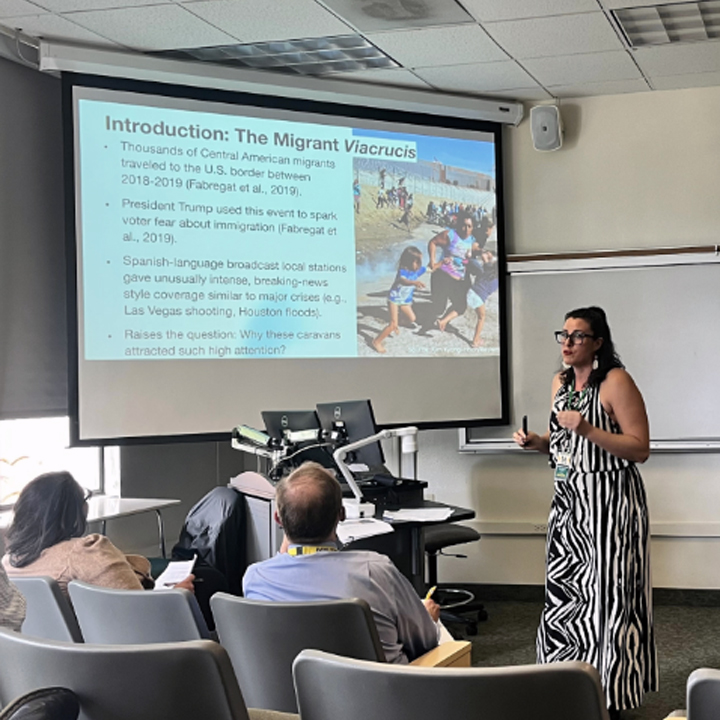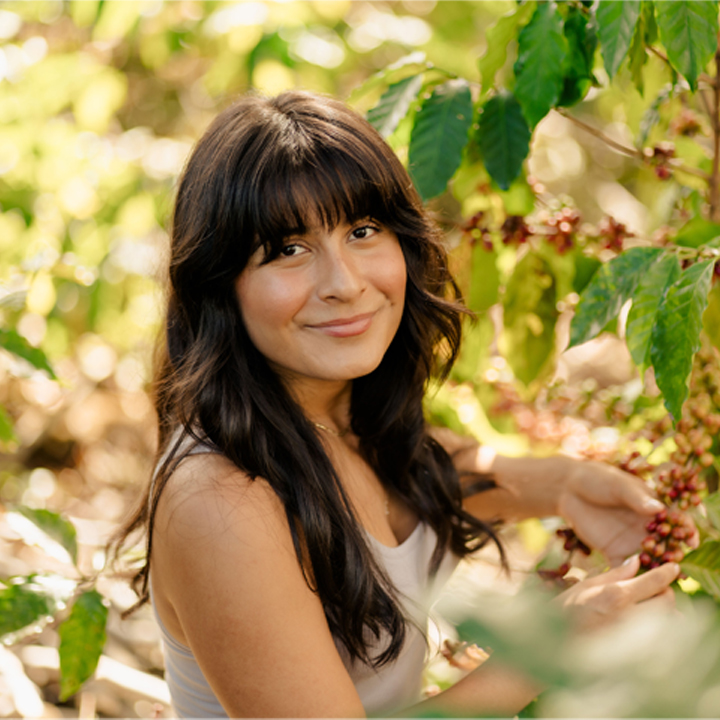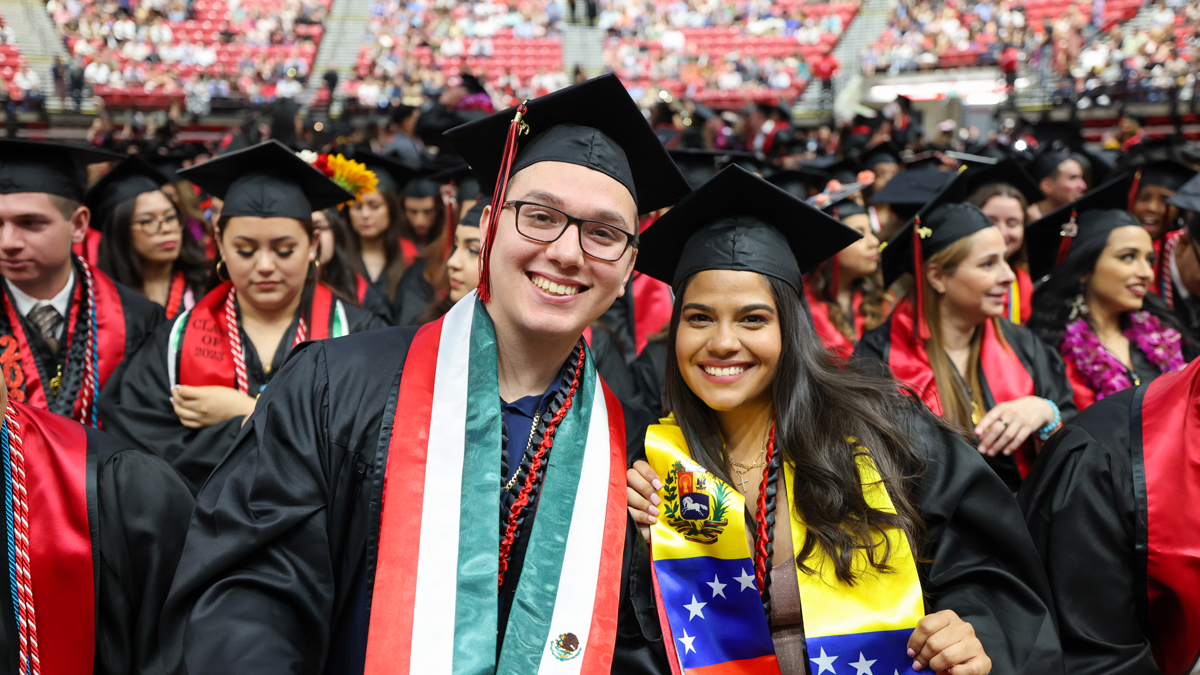Graduate Student MJ Duran Examines Spanish-Language Media Coverage of Immigration

When graduate student MJ Duran thinks about journalism, she doesn’t just think about headlines or broadcast scripts. She thinks about people. As a longtime journalist, Duran knows the weight that coverage carries, especially when it comes to topics that deeply impact immigrant communities.
This perspective is at the heart of her thesis, which examines how Spanish-language television journalists covered the 2018 migrant caravans, a pivotal moment in both immigration politics and media history.
For Duran, this project is deeply personal. She is an immigrant, Spanish is her first language and she has worked in media for 15 to 20 years.
“When Spanish-speaking immigrants come to this country, they need a source of information to speak their language and speak about topics they’re interested in,” Duran said. “People like me come here wanting to know what the news is on immigration, which makes delivering coverage in Spanish so important.”
Her research uses the concept of a “critical incident,” an extraordinary news event that forces journalists and newsrooms to rethink their routines. For Spanish-language outlets, the 2018 migrant caravans were exactly that. It was a large ongoing story that required constant coverage, significant newsroom resources and sensitive framing.
At the same time, Duran draws on framing theory, which studies how media coverage shapes the way audiences understand issues.
“As a journalist, you are aware of the power you have,” she said.
This awareness informs Duran’s research approach and underscores the importance of understanding journalists’ perspectives. Duran has already completed a pilot study, interviewing three Spanish-language journalists who covered the caravans.
“The three journalists identified the 2018 migrant caravans as a critical incident, remembering that coverage as something very important and significant,” Duran said. “They also said the coverage was very sensationalized and there was an increased amount of coverage in this issue very early on.”
Duran said the pilot study’s results were highly encouraging and that her initial interviews reinforced her belief that pursuing the research is worthwhile.
Her research aims not only to examine how stories are covered but also to highlight the experiences and perspectives of the journalists behind the reporting.
“By doing this work, I’ve learned to also center the journalists as an important piece of this puzzle because journalists are people too,” Duran said. “We do have opinions, even though we’ve spent our careers trying to free ourselves of those opinions, but it doesn’t work that way.”
Building on this perspective, Duran hopes her research will open doors for more studies on Spanish-language media, which has historically been understudied in academia due to limited access to archives and resources.
Ultimately, Duran sees Spanish-language news as approaching immigration differently from mainstream outlets, offering a perspective that focuses on context and community rather than sensationalism.
“Spanish-language media is usually pro-immigration, and they use immigration to create their audience, but that doesn’t mean they always portray immigration positively,” Duran said. “What Spanish-language media doesn’t do is demonize immigrants, and they try to understand the circumstances of the people themselves.”
Duran contrasted the approach of Spanish-language media with that of mainstream U.S. outlets, highlighting the differences in perspective and framing.
“Mainstream U.S. media could learn to look at the issue through all points of view, rather than episodic frames, by giving context and policy information and not basing coverage off impactful images,” Duran said. “Conservative media likes to latch onto the wrong things that immigrants are doing and put a lot of coverage on that.”
For Duran, these insights show why her thesis matters. The project is not just an academic exercise but also a reflection of her professional experience and her community.


